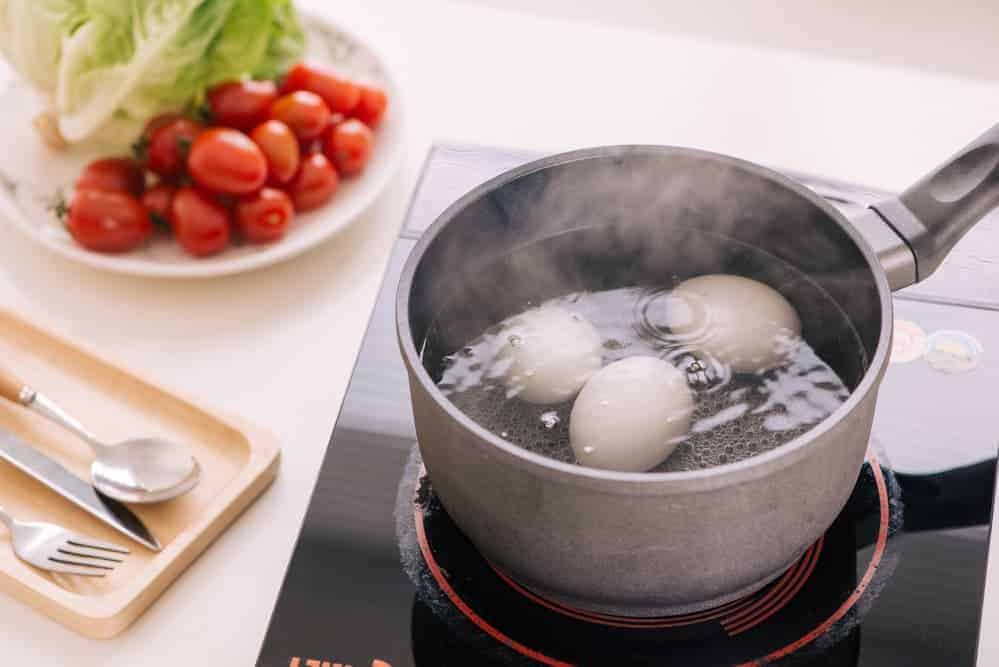Did you know that you’ve been making natural fertiliser in your kitchen all this time? If you love gardening and eating eggs, you’ll be happy to know that there’s more to your carton of eggs than toast soldiers and Scotch eggs. So, move over chemical fertilisers. We are making healthier boiled egg water for our house plants from now on, all with the help of our trusty saucepan.
How Does Boiled Egg Water Benefit Plants?
I know. You might be scratching your head thinking how can boiled egg water be helpful for plants. Isn’t plain water good enough? Well, repurposing your boiled egg water is a lot better than throwing it down the drain. More importantly, there’s something in this gardening hack that your plants love. And that is calcium.
As we make hard or soft-boiled eggs, calcium that’s naturally present in the shells leach out and stay in the water. Calcium is an alkaline mineral that can act on your acidic soil to balance out its pH. As gardeners, we all know how soil pH helps our plants thrive. And with boiled egg water on hand, we get a natural fertiliser for our plants without the added cost plus avoid wasting water. Oh, and we get to enjoy something delicious for breakfast, too. It’s a win-win deal!
How Do I Prepare and Use Boiled Egg Water?
If your plants have been transplanted and growing for several years, your soil should already be near neutral. No worries. Watering them with boiled egg water will help retain the ideal environment for plants to take in nutrients. However, if you’ve never tested your soil quality before and you’re curious about its pH, you can follow these steps when making boiled egg water for your plants:
- Purchase pH testing strips online or from gardening stores. Follow the instructions from the kit to test the pH of your soil. A neutral soil pH ideal for house plants is between 6 and 6.5.
- If the pH tester indicates that your soil is too acidic, then go ahead and boil some eggs as usual.
- Remove the boiled eggs and let the water cool before giving it to your plants.
- Transfer your boiled egg water to a jug or watering can and use it on your garden, especially on your solanaceous vegetables like potatoes, tomatoes, eggplant, capsicum and chillies.
Hold on, what if I don’t like boiled eggs? Can I still make egg water for my plants? Absolutely! Here are the steps how:
- Find and repurpose an empty milk jug or container. Make sure it has a cap or lid.
- Collect the shells from three to six eggs. There’s no need to crush them. Just break them into small enough pieces to fit inside the jug.
- Fill your jug with water, cover it then let the eggshells steep for a day. Your plants prefer room temperature water, so there’s no need to refrigerate it.
- Your eggshell water will be quite stinky though. Use it on your plants then refill it with water to make more. Once the smell is gone, it means you need to repeat the first step with fresh eggshells.
Should I Throw the Eggshells After Boiling?
Eggshells on plants are better than boiled egg water as they contain more calcium. So, make sure not to throw those away and do one of the following to repurpose them:
- Add them to your compost. If you’re already composting at home, then eggshells are a great source of green matter for your bin. Just make sure to crush them well to make them decompose faster.
- Make a homemade fertiliser. Blend banana peel, used coffee grounds, eggshells and water together to make an excellent soil energiser. It is not the best-looking mixture in the world, but your plants will love it!
- Sprinkle them on the soil to deter pests. Before transplanting your plants, sprinkle some crushed eggshells into each pot to fertilise the soil. Every two weeks, you can sprinkle the top with more crushed eggshells to keep slugs and snails away. The sharp edges of the shells make the soil uninviting for these pests.
- Use them as planters for your seedlings. If you’ve saved enough half eggshells, you can use them as makeshift pots for growing seeds. Rinse them first with warm water, remove the membrane then put a small hole at the bottom for drainage. Fill the shells with soil, press in the seeds then use the egg carton to keep them stable. When the plants are about 7.5cm tall, gently break the shell and plant them directly to your garden. Alternatively, you can plant your seeds directly to the egg carton, divide it into mini pots when ready then plant them in soil with your seedlings.


